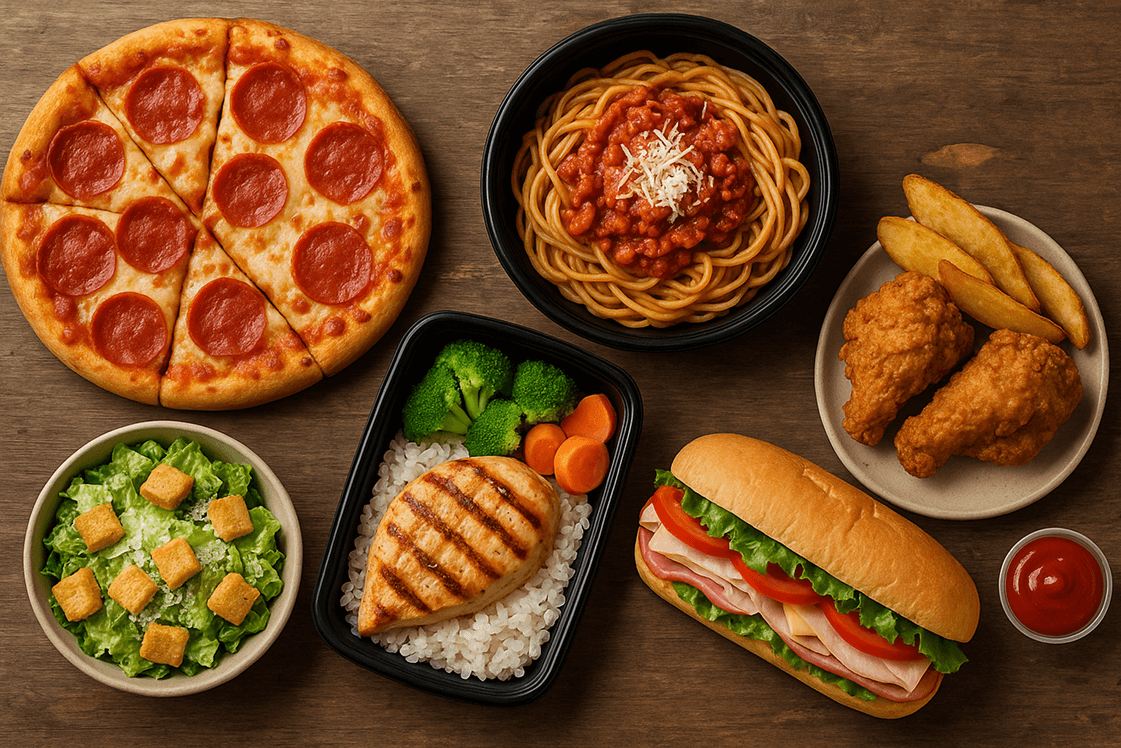Ready-to-eat foods have emerged as the dominant category for food recalls in 2025, representing a dramatic shift that demands immediate attention from food safety professionals. Recent data from government bodies shows that food recalls surged in 2024, with ready-to-eat meat and poultry products being particularly problematic. According to SGS Digicomply's Food Safety Intelligence Hub data from government body sources, ready-to-eat food incidents have experienced a staggering increase of over 350% from 2018 to 2024.
.png?width=570&height=267&name=Ready-to-Eat%20Food%20Incident%20Mentions%20(2010-2025).png)
This insight has been timely identified and is available to users through the SGS Digicomply Food Safety Intelligence Hub. Feel free to explore the Food Safety Intelligence Hub demo and try this tool in action.
What Makes Ready-to-Eat Foods So Risky?
Ready-to-eat foods face unique contamination challenges that set them apart from other food categories. The additional handling steps required to bring these further prepared foods to the dinner table create more opportunities for pathogenic contamination. Unlike raw foods that consumers will cook at home, RTE products must be safe for immediate consumption, leaving no "kill step" to eliminate potential pathogens.
The three pathogens seen most often in the U.S. are E. coli, listeria and salmonella, and these bacteria pose particular challenges for ready-to-eat products. Listeria, in particular, thrives in the conditions common to RTE food manufacturing.
Why Are Ready-to-Eat Food Recalls Increasing?
Several converging factors explain the dramatic rise in ready-to-eat food recalls:
Complex Supply Chains Drive Contamination Risk
The food industry is relying on way more global sourcing of ingredients, increasing the chances for issues. Ready-to-eat foods often involve multiple processing steps across different facilities, creating numerous opportunities for contamination.
Processing Creates Vulnerability Windows
Making ultraprocessed and ready-to-eat foods requires more steps, equipment, surfaces and facilities, creating more opportunities for contamination. Each additional handling step introduces potential contamination points that didn't exist in simpler food processing.
Listeria's Manufacturing Persistence
In manufacturing plants, listeria can establish itself in areas such as drains or crevices that are hard to clean and create something called a 'biofilm' which makes it harder to get out once it's there. This persistence makes RTE facilities particularly vulnerable to ongoing contamination issues.
Which Ready-to-Eat Products Are Most Affected?
Government data reveals specific RTE categories experiencing the highest recall rates:
Deli Meats and Charcuterie: These products consistently appear in major recalls. Boar's Head Provisions recalled more than 7 million pounds of ready-to-eat meat products for possible Listeria contamination, highlighting the vulnerability of these products.
Prepared Sandwiches and Snacks: Fresh & Ready Foods recalled several Ready-to-Eat foods including sandwiches and snack items, resulting in 10 hospitalizations and one death.
Pre-packaged Meals: Ready-to-eat meals requiring minimal preparation have shown increased recall frequency due to their complex ingredient matrices and extended shelf life requirements.
How Do Ready-to-Eat Recalls Impact Public Health?
The health consequences of RTE food recalls are particularly severe. In 2024, there were 487 people hospitalized and 19 deaths from foodborne illnesses, double the number of hospitalizations and deaths in 2023. Of those confirmed patients in foodborne outbreaks in 2024, 98 percent became ill from food that was recalled in 13 outbreaks.
Why Ready-to-Eat Recalls Are Deadlier
Listeria has a high fatality rate, with about 1,600 people getting sick with listeriosis and 260 dying from the condition each year. The ready-to-eat nature of these products means contaminated food reaches consumers without any intervening kill step, making exposure more likely and more dangerous.
What Can Food Industry Professionals Do?
Enhanced Environmental Monitoring: Implement comprehensive listeria environmental monitoring programs focusing on zones closest to product contact surfaces.
Supply Chain Auditing: Choose products from companies that prioritize food safety and provide clear information about their sourcing and handling practices.
Improved Sanitation Protocols: Develop targeted cleaning and sanitization procedures that address biofilm formation in hard-to-reach areas.
Rapid Response Systems: Establish systems for immediate product isolation and recall initiation when contamination is detected.
How Should Consumers Approach Ready-to-Eat Foods?
Food safety experts recommend heightened vigilance with RTE products:
Temperature Control: Once you cut it open, it must be refrigerated to reduce bacterial multiplication risk.
Shorter Storage Times: Don't keep leftover prepared foods for longer than seven days to reduce the ability for listeria to grow.
High-Risk Awareness: Some foods are more likely to be contaminated than others, including bagged leafy greens, pre-cut fruits, deli meats.
What's the Future Outlook for Ready-to-Eat Food Safety?
The trend toward convenience foods shows no signs of slowing, making RTE food safety a critical priority. Improvements in technology used to reveal outbreaks and link information about potential sources are helping identify problems faster, but prevention remains the key focus.
Industry experts predict that ready-to-eat foods will continue dominating recall statistics unless fundamental changes occur in manufacturing practices, supply chain management, and regulatory oversight. The 350% increase in RTE incidents from 2018 to 2024 represents more than just improved detection - it signals a genuine increase in contamination events requiring immediate industry attention.
Bottom Line: Ready-to-eat foods have become the number one category for food recalls due to their complex processing requirements, extended supply chains, and vulnerability to persistent pathogens like listeria. As consumer demand for convenience continues growing, the food industry must prioritize enhanced safety measures to protect public health while meeting market demands.
The data from SGS Digicomply's Food Safety Intelligence Hub clearly demonstrates that ready-to-eat foods represent the most significant food safety challenge of 2025, requiring immediate attention from manufacturers, regulators, and consumers alike.





.webp?width=1644&height=1254&name=Food%20Safety%20Dashboard%201%20(1).webp)
